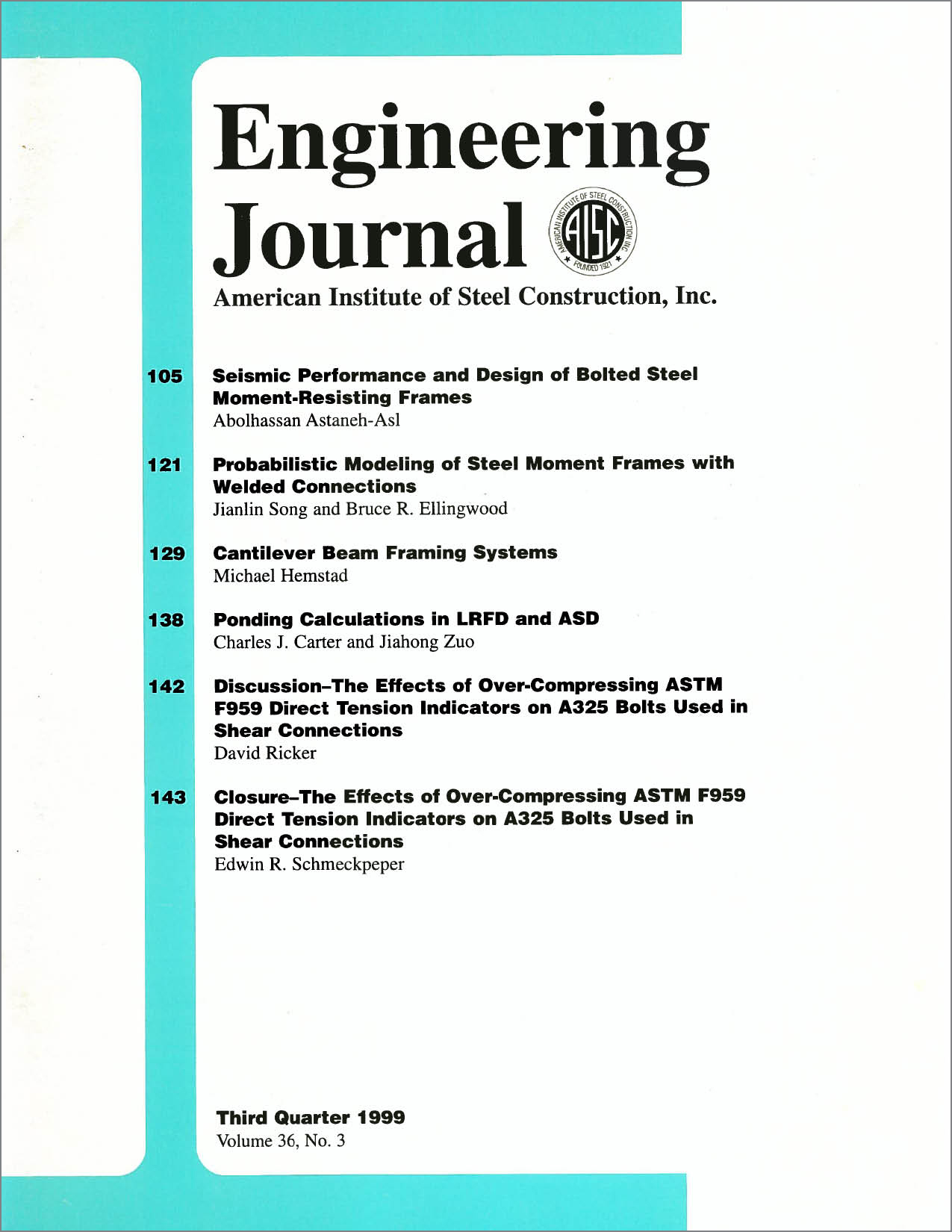Seismic Performance and Design of Bolted Steel Moment-Resisting Frames
DOI:
https://doi.org/10.62913/engj.v36i3.725Abstract
Bolted moment-resisting frames, and their predecessors riveted frames, were used for many decades prior to the use of welded frames in steel structures. Riveted and bolted steel structures have performed well during past earthquakes from the 1906 San Francisco earthquake to the infamous 1994 Northridge, Los Angeles earthquake. This paper presents information on past performance of bolted steel moment-resisting frames, a summary of shaking table tests, comparative studies of bolted and welded moment frames and a summary of results of cyclic tests of bolted top-and-bottom flange plate moment connections. The paper also presents the concept of performance-based design of steel connections using a failure mode hierarchy. In this concept, all failure modes of the connection are identified and then an order of desirability is assigned to each failure mode based on its ductility. The more ductile the failure mode is the higher its place in the hierarchy. Then, for each failure mode, design equations are developed. These equations ensure that, the more ductile failure modes, such as yielding of steel, will occur first and protect the connection from experiencing the more brittle and undesirable failure modes, such as fracture of welds, bolts or net sections. As an illustration of the procedure, this paper presents application of a proposed "hierarchical" approach to failure modes of bolted top-and bottom flange plate moment connections and provides corresponding design equations.

